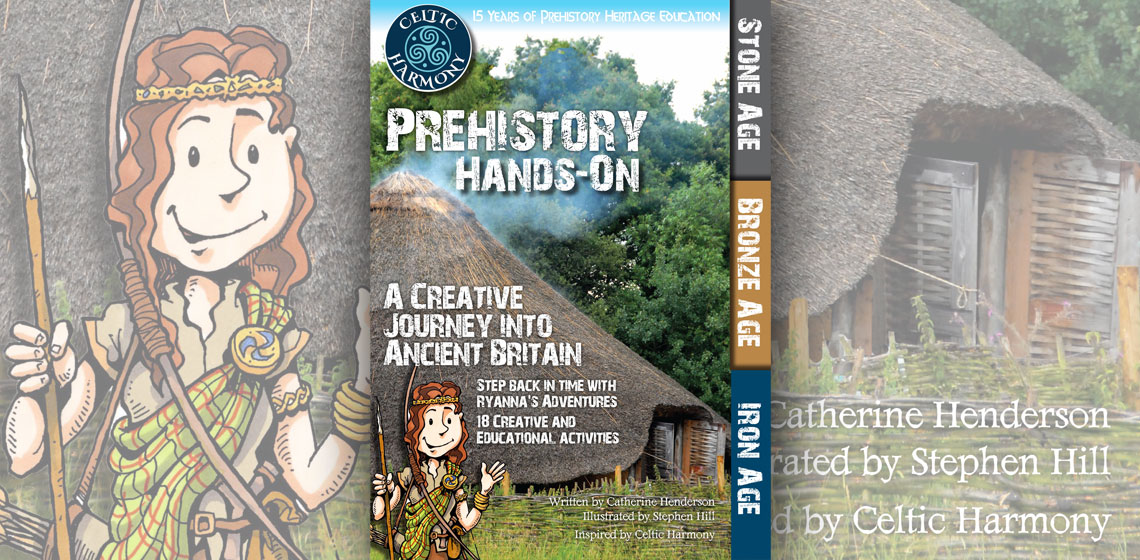
Celtic Harmony is an education centre north of London, providing natural & cultural heritage education. Hands-on activities and events based on Britain's Celtic culture promote a more sustainable way of life in harmony with the natural world. The centre opened in 1999. Heritage education is combined with bushcraft and environmental education. One of their unique selling points is archery, a theme which hardly any archaeological open-air museums have picked up in the same manner.
2014 marked their 15th anniversary of prehistory heritage education. That is when they commissioned an education booklet, inspired by Celtic Harmony, but which can be used in a wider British context. Similarly, for non-British working with prehistory heritage education, this 48 page guide offers plenty of ideas which one can modify for their own use.
The black and white book contains very effective drawings by Stephen Hill and several good photos. The font however is a bit difficult to read even though the letters are large. The print quality of the work however is very good.
As part of the New National Curriculum, schools are teaching about the changes in Britain from the Stone Age to the Iron Age. “Prehistory Hands-On” does exactly this. The story which frames all activities and questions for the readers is about Ryanna, an Iron Age girl travelling back in time to the Stone Age and then forward to the Bronze Age and to the Iron Age again. The book ends with a timeline and more background information on British prehistory.
Famous sites like Skara Brae, Flag Fen and Maiden Castle are explained in a concise but clear manner. The recommendations for further reading are unfortunately all online sources. Although the Stone Age chapter of the book is about the Neolithic, it also includes an exercise “make a tribal cave painting” which raises the eyebrows. Otherwise, the Stone Age and Bronze Age parts are fine.
Activities include making a cardboard Bronze Age sword, cooking prehistoric pudding and building a scale model of a coracle. The photocopiable activities can be done at home or in the classroom using easy-to-come-by, inexpensive materials. The activities are definitely not too hard although at some stages adult help is recommended.
It must be made clear that half of the book is about the Iron Age, as this is Celtic Harmony’s specialism. Now that everybody is warmed up, things can get more detailed. Simple questions like “where do you think the cream and honey came from” or “why do you think so few of these objects have survived” lead to more in-depth conversations with the children. They are not answered from the book itself and require extra knowledge/searching and questioning. Some things are maybe simplified too far, using phrases like ‘tribe’, ‘Celts’ and ‘Gaul (the Iron Age name for France)’.
The price for a single booklet may be high but it offers plenty of inspiration. Prehistory Hands-On is a very practical book with enough challenges and twists to captivate children. It will take at least a full autumn’s holidays to read the book, get all activities done and all questions answered. Teachers too will be really happy with this. If a compute is needed at all, then it is for following Ryanna on Facebook…
Book information:
HENDERSON, C., 2014. Prehistory Hands-On. A creative journey into ancient Britain. With drawings by Stephen Hill. Celtic Harmony, ISBN 978-0-9930501-0-7, 48 pages, UKP 12.99